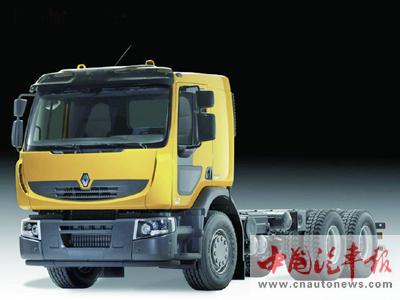What does Renault Truck Upgrade give us?

On a global scale, domestic truck manufacturers are among the best in the world. However, when it comes to technological advancement, Chinese trucks still lag behind leading European, American, and Japanese brands. In recent years, several self-developed models have emerged, especially in the heavy truck segment, significantly improving the R&D capabilities and product quality of the domestic industry. Despite this progress, China's truck sector is still in the catching-up phase compared to international standards. There's a lot to learn from foreign competitors—leveraging their strengths while addressing our own weaknesses will help accelerate our development.
This article aims to take Renault Trucks' latest model as an example, analyzing trends in European automotive design and identifying areas where Chinese trucks can improve. The goal is to offer valuable insights for domestic companies looking to enhance their competitiveness.
Design: Emphasize Unique Identity
Today, the competition in the international heavy truck market isn't just about internal performance—it also involves aesthetics. Renault Trucks may not be the most powerful or the most recognized brand in Europe, but its vehicles stand out due to their unique style. This distinctiveness has helped them maintain a solid presence in the global market.
The French have successfully integrated their artistic flair and romantic spirit into truck design. Whether it's the front grille with a fashionable three-point look or the human-centric cab design, these elements reflect a clear and unique French automotive identity.
In recent years, as Chinese truck companies have strengthened their R&D capabilities, they've gradually evolved from single products to comprehensive product lines. Drawing inspiration from foreign design practices, refining family elements on the front face of trucks has become a crucial task. A memorable and aesthetically pleasing design element can not only reinforce brand recognition but also support future marketing efforts. While many Chinese companies have recognized this, their implementation is often simplistic. For instance, FAW uses a giant eagle logo across its models as a unified feature in front design.
Three-Section Bumper: Practical and Functional
Beyond styling, there are practical lessons we can learn from Renault’s approach. One example is the three-section front bumper, which helps reduce replacement costs after accidents. Another innovation is the splash-proof front fender design, which prevents dirt from splashing onto doors and handles while improving aerodynamics during driving.
In terms of power performance, both Chinese truck manufacturers and users have become more aware of the need for high-power engines. Engine manufacturers are working to upgrade their technologies. Although 294 kW (400 hp) heavy-duty diesel engines are now available in China, most heavy trucks still use engines around 220 kW (300 hp), or even lower.
Renault Trucks, on the other hand, takes a practical approach in performance design. Their flagship Magnum heavy truck features a maximum power of 367 kW (500 hp), comparable to top European models. The Premium Route series, designed for long-haul transport, offers power ranging from 243 kW (330 hp) to 330 kW (450 hp). While not the most powerful in Europe, this range ensures efficiency and practicality under normal operating conditions.
Compared to these advanced designs, Chinese trucks have made significant improvements, but there is still room for growth in terms of technology and performance.
For more information: Dongfeng Renault Project Tracking Report
Bimetallic Screw And Barrel,Ni-Based Alloy Barrel,Bimetallic Barrel,Alloy Screw And Barrel
Zhejiang Guangming Plastics Machinery Co.,Ltd. , https://www.gmscrews.com